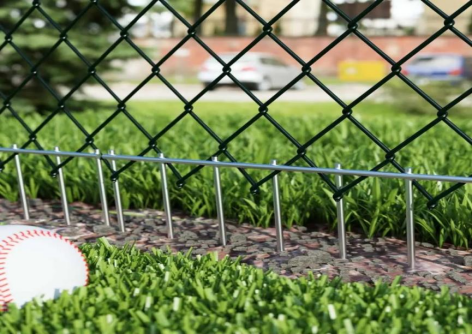Durable Steel Barbed Wire Fence Posts for Enhanced Security and Protection Solutions
The Essential Guide to Steel Barbed Wire Fence Posts
When it comes to security and boundary demarcation, few options rival the effectiveness of steel barbed wire fencing. Steel barbed wire fence posts are crucial components that provide the necessary structure and support for this type of fencing. In this article, we’ll explore the various aspects of steel barbed wire fence posts, including their types, installation, benefits, and maintenance.
Types of Steel Barbed Wire Fence Posts
Steel barbed wire fence posts come in various types, each designed to fulfill specific roles depending on the setting and requirements. The three most common types include
1. Wooden Posts While not steel, they often serve as corner and line posts in conjunction with steel wire. Wooden posts are often treated for weather resistance, but they may not offer the longevity or strength of steel posts.
2. Galvanized Steel Posts These are coated in zinc to prevent rust, offering durability and longevity. Galvanized steel posts can withstand harsh environmental conditions, making them ideal for outdoor use.
3. Metal T-posts These posts are designed with a high carbon content for extra strength and are often C-shaped for easier installation. They are lighter than traditional fence posts but provide excellent support for barbed wire.
4. Pipe Posts Made of thicker steel, these posts are incredibly durable and appropriate for high-security facilities. They can withstand dynamic loads and heavy impacts, making them preferred in commercial and agricultural settings.
Installation of Steel Barbed Wire Fence Posts
Installing steel barbed wire fence posts requires careful planning and proper execution for optimal results. Here’s a brief overview of the steps involved
1. Planning Determine the layout of your fence and mark the position of the posts. Ensure that your layout adheres to local regulations and property lines.
2. Digging Depending on the type of post, you'll need to dig holes ranging from 24 to 36 inches deep. The spacing of the posts generally ranges from 8 to 12 feet apart, depending on the terrain and wire type.
3. Setting the Posts Insert the posts into the holes and ensure they are vertical. For added stability, you may consider using concrete to set the posts securely.
4. Attaching the Barbed Wire Once the posts are set and stable, unroll the barbed wire along the length of your fence. Use fencing staples or wire ties to attach the barbed wire securely to the posts.
steel barbed wire fence posts

5. Tensioning the Wire It’s crucial to maintain adequate tension on the barbed wire to prevent sagging and ensure the fence's effectiveness. Use a tensioning tool to tighten the wire appropriately.
Benefits of Steel Barbed Wire Fence Posts
The advantages of using steel barbed wire fence posts are numerous
1. Durability Steel is resistant to decay, rust, and damage from pests, ensuring a longer lifespan compared to wooden alternatives.
2. Security The combination of barbed wire and sturdy steel posts creates a formidable barrier, deterring intruders and protecting livestock.
3. Low Maintenance Once installed, steel barbed wire fence posts require minimal maintenance compared to wooden posts, which may need regular inspection and treatment.
4. Cost-Effective While the initial investment may be higher, the longevity and durability of steel posts make them a cost-effective choice in the long term.
Maintenance of Steel Barbed Wire Fence Posts
To maximize the lifespan and effectiveness of your steel barbed wire fence, some maintenance practices should be followed
1. Regular Inspections Periodically inspect the posts and barbed wire for signs of wear, rust, or damage. Prompt repairs can prevent larger issues down the line.
2. Rust Prevention If you notice any rust spots, treat them immediately with rust-inhibiting paint or a rust converter to prolong the life of your fence.
3. Tension Adjustment Re-check the tension of the barbed wire periodically, especially after extreme weather conditions, to ensure the fence remains secure.
Conclusion
Steel barbed wire fence posts are invaluable for anyone looking to secure their property effectively. With their durability, strength, and low maintenance requirements, they offer a reliable solution for agricultural, residential, and commercial needs. By selecting the right type of post, following proper installation procedures, and adhering to maintenance recommendations, you can ensure that your steel barbed wire fence remains a vital line of defense for years to come.
-
Space-Saving Chain Fence Hacks Vertical Gardening with Cyclone MeshNewsJul.16,2025
-
Innovations in Iron Nail Wire Production for Modern ConstructionNewsJul.16,2025
-
Creative Uses of Wire Netting Fence in Modern Landscape DesignNewsJul.16,2025
-
Barbed Wire Fence Innovations in Anti-Climb TechnologyNewsJul.16,2025
-
Architectural Uses of Umbrella Nails for Aesthetic Roof DesignsNewsJul.16,2025
-
Architectural Uses of Razor Barbed Wire in Secure Urban DesignNewsJul.16,2025




